2019 National Hispanic Heritage Month
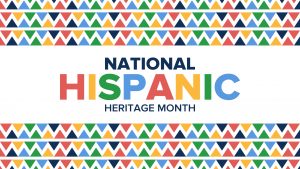
Photo Credit: Shutterstock ID: 1486106495
Started in 1968 as Hispanic Heritage Week under President Lyndon Johnson when Congress passed Pub. L. 90-498, National Hispanic Heritage Month was expanded to 30 days by President Ronald Reagan in 1988. Beginning the observation on September 15th has significance – elevating the anniversary of independence for Latin American countries. These nations include Costa Rica, El Salvador, Guatemala, Honduras and Nicaragua. Mexico and Chile celebrate their independence days on September 16th and September 18 respectively.
The very first proclamation designating Hispanic Heritage Week which went on to become National Hispanic Heritage Month was issued by then President Lyndon B. Johnson – Presidential Proclamation 3869 – which offers in part:
Wishing to pay special tribute to the Hispanic tradition, and having in mind the fact that our five Central American neighbors celebrate their Independence Day on the fifteenth of September and the Republic of Mexico on the sixteenth, the Congress by House Joint Resolution 1299, has requested the President to issue annually a proclamation designating the week including September 15 and 16 as National Hispanic Heritage Week.
Dr. Catalina Esperanza Garcia

Photo Credit: University of Texas El Paso
Growing up in in el Segundo Barrio of El Paso, Texas, Dr. Catalina Esperanza Garcia remembers wanting to become a doctor as a child. “In sports they tell you to imagine making the perfect shot, well for me the perfect shot was walking down the hospital corridor, dressed as a physician in a white coat with a stethoscope.”
In 1961, Dr. Garcia graduated from Texas Western College – now named the University Of Texas El Paso (UTEP) with a bachelor’s degree in biology. Eight years later, Dr. Garcia became a doctor. In 1969, she became the second Latina to graduate from the University of Texas Southwestern Medical School. For the next 50 years, Dr. Garcia built her medical career as an anesthesiologist in North Texas. In addition to her being a practicing physician, Dr. Garcia has been actively involved community engagement. Her drive to help young Hispanic women succeed, Dr. Garcia established the Dr. Catalina E. Garcia Student Enhancement Endowment in 2015. Such support facilitates cultural immersion activities for students in the UTEP’s Medical Profession’s Institute (MPI).
Citation: University of Texas El Paso. (n.d.). Dr. Catalina Esperanza Garcia. Retrieved October 2, 2019, from https://givingto.utep.edu/page.aspx?pid=1631.
Dr. Garcia is also a founding member of the philanthropic Dallas Women’s Foundation. She teaches English to immigrant women. In 2013, Dr. Garcia was the recipient of the Dallas-Fort Worth Hispanic 100 Latina Living Legend Award. In 2016, she received a Distinguished Alumni and Gold Nugget Award from the University of Texas at El Paso.
Helen Rodríguez-Trías, MD
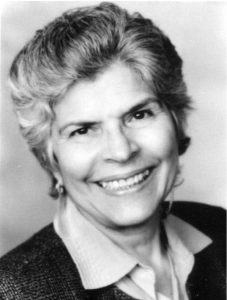
Photo Credit: American Journal of Public Health
Dr. Helen Rodriguez-Trías wanted to be a physician because medicine “combined the things I loved the most, science and people. I understood that medicine would give me more direct and independent ways to contribute to society, not through organizations or abstract studies, but acting directly on the individual.” As a pediatrician, she strove to meet the health needs of the poorest children, from San Juan to the South Bronx. She was medical director of the New York State AIDS Institute from 1988 to 1989, and she was named the first Latina president of the American Public Health Association (APHA) in 1993. Rodriguez-Trías may be best known, however, for her pivotal role in the women’s health movement.
Dr. Helen Rodriguez-Trías was a founding member of the Women’s Caucus of the American Public Health Association. Dr. Helen Rodriguez-Trías was a founding member of Committee to End Sterilization Abuse. Dr. Helen Rodriguez-Trías received the Presidential Citizen’s Medal for her work on behalf of women, children, people with HIV and AIDS, and the poor. Dr. Helen Rodriguez-Trías was the first Latina to be elected president of the American Public Health Association. Dr. Helen Rodriguez-Trías was a founding member of the Committee for Abortion Rights and Against Sterilization Abuse.
Citation: Wilcox J. (2002). The face of women’s health: Helen Rodriguez-Trías. American journal of public health, 92(4), 566-9.
Dr. Eduardo D. Rodriguez
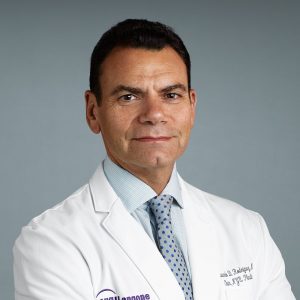
Photo Credit: New York University Department of Plastic Surgery
Dr. Eduardo Rodriguez practices as a plastic surgeon in New York City. Rodriguez has affiliations with various hospitals in America’s largest city – including NYU Langone Hospitals. He also is connected with the University of Maryland Medical Center in Baltimore.
A native to South Florida, Dr. Eduardo D. Rodriguez is the son of Cuban immigrants. “We are a resilient culture that knows how to overcome adversity and make the best of any situation. Cubans are hard-working people with strong family values, deep rooted traditions, and of great religious faith,” offered Rodriguez to Univision News in their honoring Hispanic Heritage Month.
Rodriguez and his team performed New York University Langone’s first face transplant in August 2015. Patrick Hardison – Mississippi firefighter who sustained serious burns in September 2001 while on the job – was the recipient. Discussing Hardison’s procedure Rodriguez said, “There is nothing that brings greater joy than to care for patients in need of surgical solutions.”
Rodriguez earned his medical degree from Virginia Commonwealth University School of Medicine in Richmond.
Citation: Núñez, E., Liendo, O., & Univsion. (2016, October 14). 23 inspiring stories of Hispanic health professionals. Retrieved October 2, 2019, from https://www.univision.com/univision-news/health/these-23-hispanics-are-an-example-in-the-us-health-services.
Mario Molina
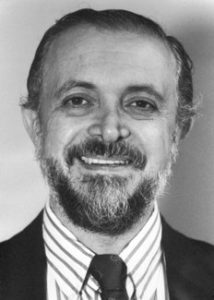
Photo Credit: The Nobel Foundation
A native of Mexico City, Mario Molina won a Nobel Prize in 1995 for his research on how man-made chemicals affect the Earth’s ozone layer. In 1995, Molina won a Nobel Prize for Chemistry in recognition of his contributions to science.
Accordingly to Biography.com, Molina as a child created a chemistry lab inside a bathroom in his home. To expand his interests in chemistry, Molina began his educational journey in Mexico, then Germany and ultimately moved to the United States in 1968. Here, Molina earned a degree in physical chemistry from the University of California (UC) Berkeley.
After meeting and marrying his wife Luisa Tan and graduating from UC Berkeley in 1972, Molina left moved to Southern California to continue his research at UC Irvine. Molina taught at the Massachusetts Institute of Technology (MIT) from 1989 to 2004, leaving the east coast for a teaching position at UC San Diego.
On November 20, 2013, then President Barack Obama awarded Molina the Presidential Medal of Freedom.
Citation: Biography.com Editors. (2019, August 26). Mario Molina Biography. Retrieved October 2, 2019, from https://www.biography.com/scientist/mario-molina.
Dr. Bernardo Alberto Houssay
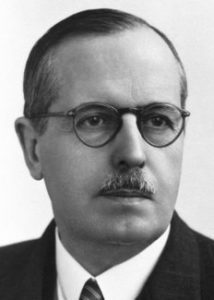
Photo Credit: The Nobel Foundation
The recipient of the Nobel Prize in Physiology or Medicine in 1947, Dr. Bernardo Alberto Houssay was born in 1887 as one of eight children. His parents, Dr. Albert and Clara (née Laffont) Houssay brought his family to Buenos Aires from France. Houssay began his educational training at Colegio Británico, after which he entered the School of Pharmacy at the University of Buenos Aires at the age of 14. Houssay graduated in 1904 and began studying medicine. He began working in the Department of Physiology within the same university in 1907 – while continuing his medical training.
He then entered the School of Pharmacy of the University of Buenos Aires graduating in 1904 at the age of 14. He had already begun studying medicine, then in 1907, before completing his studies he began working in the Department of Physiology. Over the next decade, Houssay…
- Was appointed Professor of Physiology in the University of Argentina’s School of Veterinary
- Became Chief Physician at the Alvear Hospital
- Led the Laboratory of Experimental Physiology and Pathology in the Argentina National Department of Hygiene
- Became Professor of Physiology in the Medical School of the University of Buenos Aires
- Organized the Institute of Physiology in the Medical School.
Houssay held the latter two posts until 1943, the year during with the Argentine government stripped him of his positions for expressing support for democracy in Argentina. In 1955, a new Argentine governmental administration reappointed him to his posts in the University.
Houssay has authored over 500 papers and several books, won many prizes, and hold honorary degrees of 25 universities. He died on September 21, 1971.
Citation: Cori, C., Cori, G., Houssay, B., & The Nobel Foundation. (1947). The Nobel Prize in Physiology or Medicine 1947. Retrieved October 2, 2019, from https://www.nobelprize.org/prizes/medicine/1947/houssay/biographical/
Ildaura Murrillo-Rohde, PhD, RN, FAAN
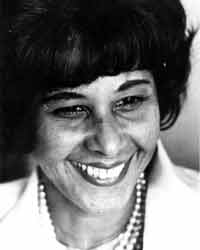
Photo Credit: National Association of Hispanic Nurses
After serving as an active member of the American Nurse Association – and realizing the organization was not meeting the needs of Latinx nurses – Dr. Murrillo-Rohde founded the National Association of Hispanic Nurses (NAHN) in 1975. Born on September 6, 1920 in Panama, Murrillo-Rohde arrived in the United States in 1945. She started her nursing career in San Antonio, Texas – in a community comprising Hispanic residents. The community had a visible shortage of Hispanic nurses, something Murrillo-Rohde observed in academic settings related to research and public policy, prompting her to do something about it.
What followed were a series of professional and educational attainments, including:
- Earning a Bachelor’s of Arts degree in psychiatric mental health nursing at Columbia University
- Obtaining a Master’s & Doctorate degrees at New York University
- A fellowship from the American Academy of Nursing
- Becoming faculty, professor, and eventually Dean of Nursing at the State University of New York (SUNY) in Brooklyn
- Serving as dean and professor emeritus of SUNY’s School of Nursing
- Named permanent representative of UNICEF, New York for the International Federation of Business and Professional Women
Prior to falling ill, Murrillo-Rohde played an intimate role in convening NAHN conferences. The Dr. Ildaura Murillo-Rohde Award for Education Excellence by a Hispanic Registered Nurse is conferred to honor NAHN members with stellar performance in any scholarship are and/or nursing education.
Murrillo-Rohde passed away on September 5, 2010 in Panama.
Citation: National Association of Hispanic Nurses. (n.d.). Dr. Ildaura Murillo-Rohde, PhD, RN, FAAN. Retrieved October 2, 2019, from http://nahnnet.org/NAHN/Content/Ildaura_Murillo-Rohde.aspx